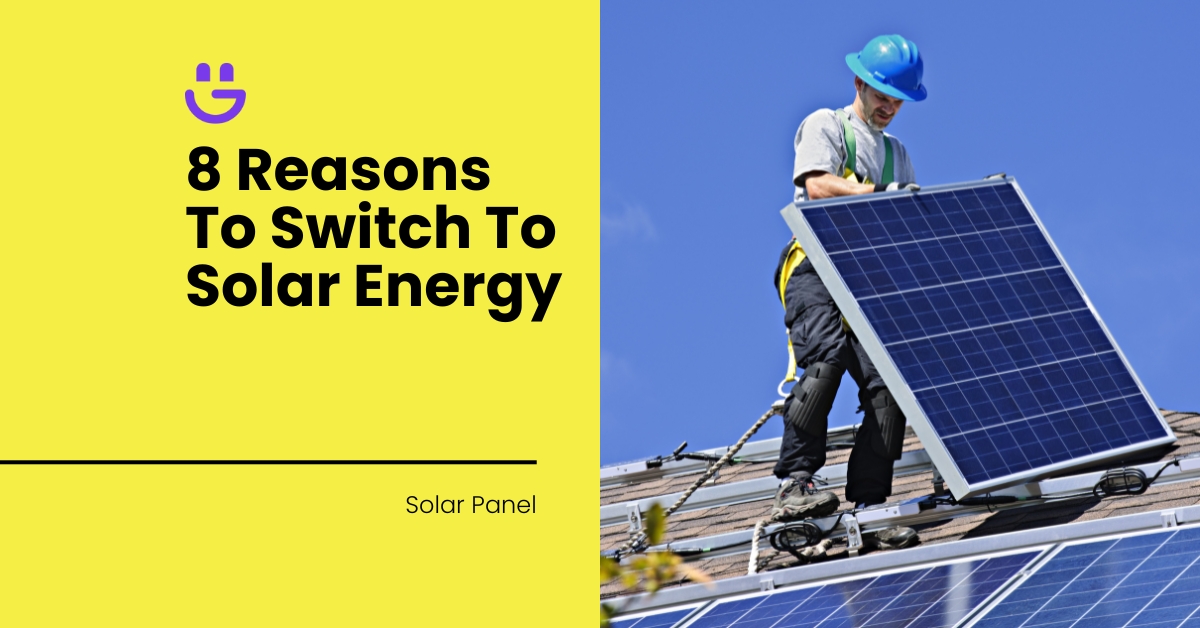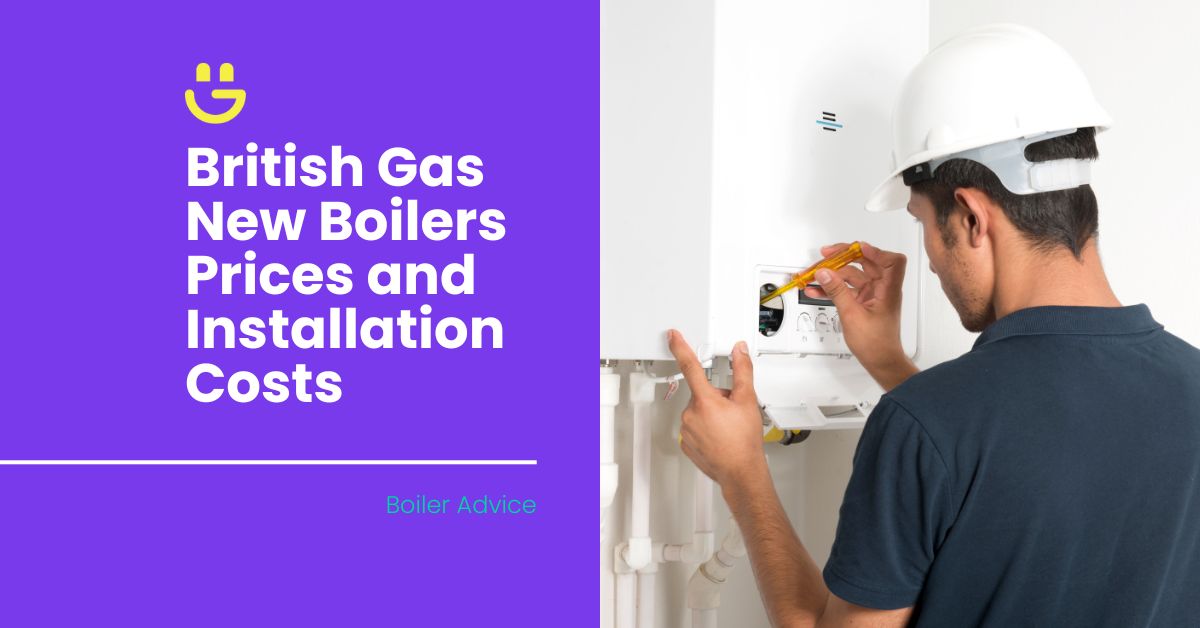Last Updated on July 27, 2024
Yes, solar panels can be fitted on asbestos structures. However, we caution that drilling into asbestos-containing materials (ACMs) should be avoided if possible.
Asbestos is a dangerous material that can pose a severe health hazard. Structural work with asbestos, including solar installations, should be approached with extreme care.
That said, many UK buildings have successfully integrated solar panels on asbestos roofs. In this guide, we highlight the challenges associated with such projects. We also look at safer means of securing panels on asbestos roofs, installation costs, and funding grants available.
Contents
- 1 Risks of Installing Solar Panels on an Asbestos Roof
- 2 Other Options for Installing Solar PV Panels on an Asbestos Roof
- 3 How Long Does it Take to Install Solar Panels on an Asbestos Roof?
- 4 How Much Does it Cost to Install Solar Panels on Asbestos Roofs?
- 5 Are there Grants for Installing Solar Panels on Asbestos Roofs?
- 6 Get A Solar Panel Installation Quote Today
- 7 FAQs
- 8 Our Verdict
Risks of Installing Solar Panels on an Asbestos Roof
Asbestos is a potentially hazardous and carcinogenic material. People exposed to asbestos fibres can become seriously ill, contracting asbestosis or cancers such as mesothelioma and lung cancer.
Given the dangers, installing solar panels on an asbestos roof presents several challenges and risks.
Dust and fibre dangers
To install solar panels, you need to drill into the roof structure. However, drilling into asbestos materials causes the release of asbestos fibres and dust into the air.
The uncontrolled release of these dangerous particles is a health risk to installers and people in the surrounding area. Passers-by and residents in the neighbourhood, especially those with co-morbidities, may be severely affected.
Professional contractors will take steps to limit the spread of asbestos fibres by erecting a barrier shield around the site but complete containment is always a challenge.
Health, safety and legal considerations
Compared to a normal solar PV installation, working on asbestos roofing comes with a lot more health, safety and legal responsibilities.
The project will have to comply with regulations such as the Control of Asbestos Regulations 2012 and the Construction, Design, and Management (CDM) regulations. Ignoring these regulations could result in consequences such as fines and legal action.
The UK Health and Safety Executive (HSE) has asbestos drilling guidelines. The correct procedures require a high level of experience and expertise. An HSE-licensed contractor may have to be hired for the solar panel installation, adding to the expense.
Completion cleanup
A proper cleanup after the installation is essential to prevent contamination and the spread of asbestos particles. This is a more thorough effort than the typical after-job cleanup.
Specialised equipment and protocols are necessary to ensure the safe disposal of asbestos waste to mitigate exposure and health risks.
Other Options for Installing Solar PV Panels on an Asbestos Roof
Many property owners have opted for one of the following alternative solutions to minimise the hazard.
Complete removal and replacement of the roof
While there is no legal obligation to replace an asbestos roof, asbestos is not the best long-term solution. If you’re set on solar and have the funds, you may want to remove your asbestos roof. Eliminating asbestos from your environment is a sensible choice.
Safety protocols for removing asbestos roofs
- Only trained and licensed professionals can handle asbestos removal.
- The area must be completely sealed off.
- The removed material must be dampened to minimise dust.
- The asbestos must be transported and disposed of in facilities that handle hazardous materials.
There are a variety of roof replacement options depending on your property, preferences, structure, and local regulations. A new corrugated steel roof, asphalt shingles, or composite roofing are ideal surfaces for solar panels. A 4-bedroom home solar system (say 5 kWh) can be installed in two days on such surfaces while a commercial project (40 kWh system) may take a week or longer.
Admittedly, removing and replacing your roof is an expensive project. Overcladding is a more affordable option worth considering.
Overcladding
Overcladding involves adding a new layer over your existing roof. This new layer is usually made of steel or metal and creates a safe surface to mount your solar panels without disturbing the asbestos underneath.
Ovecladding is more cost-effective than completely replacing your roof. It also offers the roof a fresh makeover and an extra layer of insulation. A better-insulated property retains more heat and incurs lower energy bills.
Overcladding and solar installation process
- Before going this route, an engineer must check and confirm that your existing roof is strong enough for the extra weight of the cladding and solar system.
- Following a satisfactory inspection of your roof, a custom plan is created for your specific needs, incorporating the solar system.
- Qualified installers will add the overcladding layer, ensuring a secure fit over your existing roof.
- Finally, your solar panels can be installed on the new surface. Mounting brackets to fit solar panels can be easily secured to metal and other robust materials, making this process relatively straightforward.
- There are even specialised overcladding systems that combine the cladding and solar panels into one unit. This setup uses patented interlocking solar panels which form a tightly sealed membrane on the old roof.
Ground-mounted solar panels
A ground-mounted system might be the answer for those with available land who want to avoid drilling into asbestos. Ground-mounted panels are installed using supporting metal frames on the ground.
Pros
- Flexibility: You have more choices about how to position your panels to benefit from maximum sun exposure.
- Better efficiency: Panels can be tilted towards the sun and some advanced systems even track the sun throughout the day. The ability to capture more sunlight generates over 20% more energy.
- Easy maintenance: Cleaning and maintaining your panels is generally easier since you don’t have to climb onto your roof.
Cons
- Cost: Due to additional materials and longer installation times, ground-mounted systems can cost up to a third more than roof-mounted setups.
- Space: An average property needs around 20-30 square metres of land to accommodate the system.
- Planning permission: A ground solar array larger than 9 square metres requires planning permission approval.
How Long Does it Take to Install Solar Panels on an Asbestos Roof?
If the alternatives we’ve discussed don’t work for you and you decide on having solar panels installed on your asbestos roof, the job will take longer than on many other surfaces. Setting up a containment barrier, careful drilling, limiting dust, and performing a proper cleanup all add to the labour hours.
A small installation for a 3-bedroom dwelling is usually handled in two days, while larger commercial jobs can take a week or two.
The following factors will influence the project’s duration:
- The number of solar panels needed.
- The amount of asbestos in the structure.
- The difficulty of the working surface.
- Possible challenges of safely wiring the system.
- Bad weather.
How Much Does it Cost to Install Solar Panels on Asbestos Roofs?
If professional assessments deem it safe to install solar on your asbestos roof, here are cost estimates across different sizes and types of properties. The estimates are based on the average solar panel sizes – 350W for homes and from 400W to 600W+ for businesses.
Residential
| House Size | Solar Panel System kWh Requirement | Number of Solar Panels – 350 W | Estimated cost (with installation) |
|---|---|---|---|
| 1 bedroom | 3 kWh | 6 – 8 | £6,000 – £7,500 |
| 2 bedroom | 3.5 kWh – 4 kWh | 8 – 10 | £7,500 – £8,500 |
| 3-4 bedroom | 5 kWh | 10 – 16 | £8,500- £10,500 |
| 5 or more bedrooms | 6 kWh | 16 – 20 | £10,000 – £13,000+ |
Commercial
| Business size | Solar Panel System kWh Requirement | Number of solar panels – 400 W | Number of solar panels – 600 W | Estimated cost (with installation) |
|---|---|---|---|---|
| Small | 20 kWh | 25 – 30 | 16 – 32 | £17,000 – £32,000 |
| Medium | 60 kWh | 125 – 150 | 82 – 100 | £44,000 – £78,000 |
| Large | 100 kWh | 200 – 250 | 130 – 165 | £65,000 – £125,000 |
Are there Grants for Installing Solar Panels on Asbestos Roofs?
The government wants to encourage the uptake of solar, so several grants are available to help property owners make the transition.
You may qualify for financial assistance under one of the following schemes (though eligibility might be stricter for installations on asbestos structures):
- Energy Company Obligation 4 (ECO4): This scheme runs until March 2026 and offers eligible households in England, Scotland, or Wales financial support for solar projects.
- Home Upgrade Grant (HUG2): This grant is aimed at low-income households, particularly those off-grid. The scheme is available until March 2025 and could fund up to £10,000.
- Home Energy Scotland Grant and Loan Schemes: All households in Scotland could be eligible for up to £6,000 to assist with installing solar systems.
Get A Solar Panel Installation Quote Today
As low-carbon buildings become a priority, solar panels are a great way to future-proof your property and lower your carbon footprint. Start enjoying lower energy bills and green living by contacting Eco Happy for a free, no-obligation solar installation quote today.
Feel free to reach out to us with any queries you have about solar on your roof. Our team of solar experts will be happy to assist.
FAQs
What permission do I need to install solar panels?
In most cases, solar panels can be installed in the UK without planning permission. However, you should check and comply with local building regulations. Regarding installation on an asbestos roof, the handling of asbestos is strictly regulated and installation should ideally be done by licensed professionals; they must comply with all safety regulations.
Can you cover an asbestos roof?
There is a process that covers or encapsulates an asbestos roof. A special, protective coating is sprayed onto the roof and acts as a seal to lock in the dangerous fibres and prevent them from getting into the air.
How long do asbestos roofs last?
There are millions of homes, farm buildings, workplaces, and storage garages across the UK containing asbestos. Many of these date back to before the 1980s and still have their roofs intact. Asbestos roofs are expected to last at least 25 years and sometimes up to 50 years.
Our Verdict
Installing solar panels on an asbestos roof is possible but comes with challenges and safety concerns. The hazardous nature of asbestos requires that installations be carried out by certified and competent professionals familiar with the relevant health, safety, and legal regulations.
Alternatives like roof replacement or overcladding offer safer solutions while ground-mounted systems are an option if you have available land. Despite the challenges, many buildings have successfully integrated solar panels on asbestos roofs. Installation costs range from £6,000 for a 1-bedroom home to £13,000 for a 5-bedroom property and over £100,000 for large commercial premises.





James Elston
Boiler Expert
James Elston is the top boiler replacement and heating expert at Eco Happy. He has over 20 years of experience in the industry, focusing on Gas Safe boiler installations and offering home-heating and energy-saving solutions to homeowners across the UK. From sourcing the most energy-efficient combi boiler to providing specialist heating advice, James ensures that Eco Happy maintains the highest standards and best customer service.